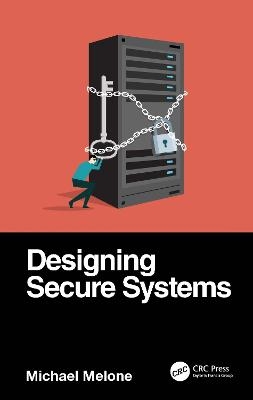
Designing Secure Systems
CRC Press (Verlag)
978-0-367-70001-0 (ISBN)
Modern systems are an intertwined mesh of human process, physical security, and technology. Attackers are aware of this, commonly leveraging a weakness in one form of security to gain control over an otherwise protected operation. To expose these weaknesses, we need a single unified model that can be used to describe all aspects of the system on equal terms.
Designing Secure Systems takes a theory-based approach to concepts underlying all forms of systems – from padlocks, to phishing, to enterprise software architecture. We discuss how weakness in one part of a system creates vulnerability in another, all the while applying standards and frameworks used in the cybersecurity world. Our goal: to analyze the security of the entire system – including people, processes, and technology – using a single model.
We begin by describing the core concepts of access, authorization, authentication, and exploitation. We then break authorization down into five interrelated components and describe how these aspects apply to physical, human process, and cybersecurity. Lastly, we discuss how to operate a secure system based on the NIST Cybersecurity Framework (CSF) concepts of "identify, protect, detect, respond, and recover."
Other topics covered in this book include the NIST National Vulnerability Database (NVD), MITRE Common Vulnerability Scoring System (CVSS), Microsoft’s Security Development Lifecycle (SDL), and the MITRE ATT&CK Framework.
Michael Melone has 20 years of information security experience overall, including 16 years in technology and 8 years as an incident responder. He currently works as a principal program manager for the Defender ATP product group gathering feedback and assisting Microsoft’s largest and most influential customers throughout their onboarding process. He was previously one of the initial members of DART, Microsoft’s customer-facing targeted attack incident response team. During his tenure he designed the process used by consultants to recover customer networks from targeted attacks and led the development of IRDB, the proprietary threat hunting platform designed to surface attackers hidden within networks. He holds a masters degree in IT management specializing in information assurance and security from Capella University, and is actively pursuing his executive MBA from University of South Florida. He also holds a number of information security and other technology credentials including CISSP since 2007. In 2017 Michael self-published his first short book on authorization theory called Think Like a Hacker. This new book is the result of applying its concepts at customers and identifying a single unified approach based on its core algorithm.
1. Introduction
Secure System Concepts
2. Access
3. Authorization
4. Authentication
5. Weakness, Vulnerability, and Exploitation
6. Impact
Designing and Operating a Secure System
7. Identify
8. Protect
9. Detect
10. Respond
11. Recover
12. Closing
13. Acknowledgements
| Erscheinungsdatum | 24.09.2021 |
|---|---|
| Zusatzinfo | 3 Tables, black and white; 10 Line drawings, black and white; 10 Illustrations, black and white |
| Verlagsort | London |
| Sprache | englisch |
| Maße | 156 x 234 mm |
| Gewicht | 1020 g |
| Themenwelt | Informatik ► Netzwerke ► Sicherheit / Firewall |
| Mathematik / Informatik ► Informatik ► Software Entwicklung | |
| Mathematik / Informatik ► Informatik ► Theorie / Studium | |
| Recht / Steuern ► Privatrecht / Bürgerliches Recht ► IT-Recht | |
| Wirtschaft ► Volkswirtschaftslehre | |
| ISBN-10 | 0-367-70001-8 / 0367700018 |
| ISBN-13 | 978-0-367-70001-0 / 9780367700010 |
| Zustand | Neuware |
| Informationen gemäß Produktsicherheitsverordnung (GPSR) | |
| Haben Sie eine Frage zum Produkt? |
aus dem Bereich


